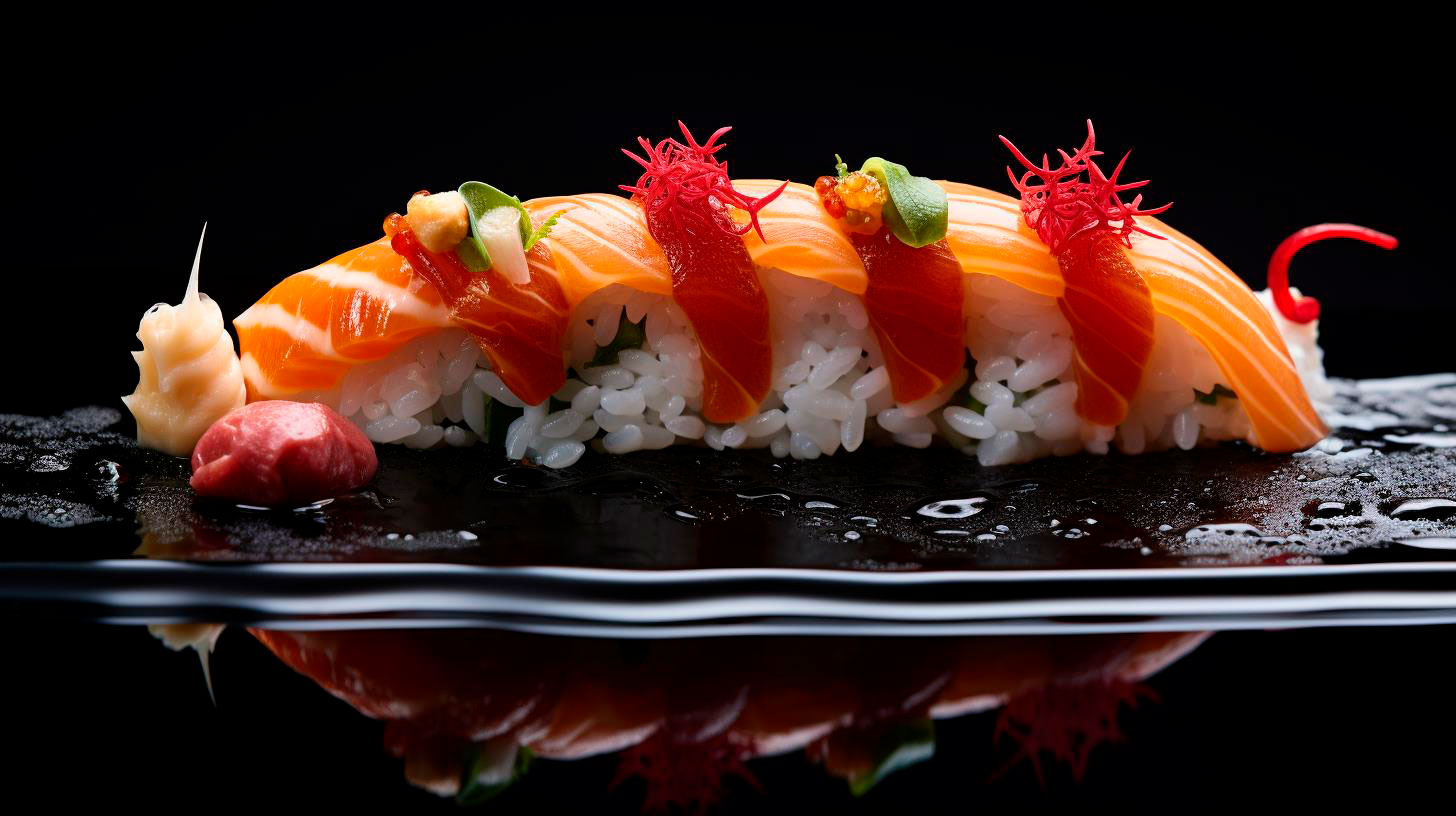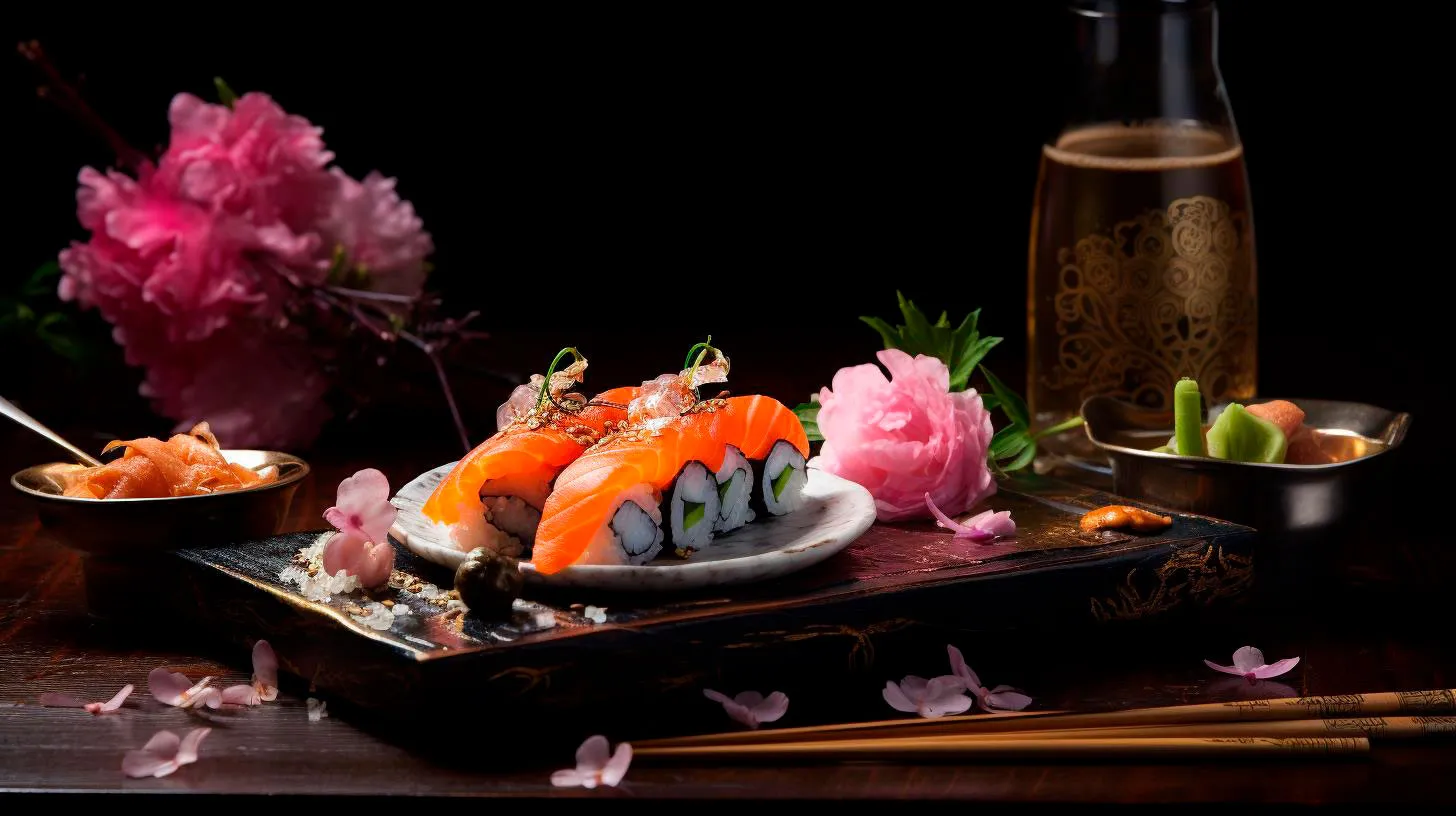The Origins of Sushi
The history of sushi dates back over 1,300 years, evolving from a preservation method to a refined gastronomic delight. Originally, sushi was created as a means to store fish by fermenting it with rice. The rice acted as a natural preservative, allowing the fish to be preserved for several months. Over time, this preservation method evolved into what we know today as sushi.
It was during the Edo period in Japan (17th to 19th century) that sushi reached its peak popularity. Sushi chefs began to experiment with different ingredients and techniques, resulting in the creation of various sushi types and styles. Since then, sushi has continued to evolve and expand, both in Japan and across the world.
Types of Sushi
Sushi can be categorized into different types, each offering a unique taste and texture. Here are some of the most popular:
- Nigiri: A classic sushi type consisting of a hand-pressed mound of rice topped with a slice of raw or cooked fish.
- Maki: Rice and fillings rolled in a sheet of seaweed (nori), sliced into bite-sized pieces. Maki rolls can be filled with various ingredients such as fish, vegetables, or even fruit.
- Sashimi: Sliced raw fish or seafood served without rice. Sashimi showcases the freshness and quality of the fish.
- Temaki: Hand-rolled sushi in a cone shape, with rice and fillings wrapped in a sheet of nori.
- Chirashi: A bowl of sushi rice topped with a colorful assortment of diced fish, vegetables, and other ingredients. Chirashi is a visually appealing and flavorful option.
The Evolution of Sushi
Today, sushi has become a global phenomenon, with countless sushi restaurants popping up in cities around the world. Its popularity can be attributed to several factors:
- Health Benefits: Sushi is often considered a healthier dining option due to its fresh ingredients and low-fat content. Fish and seafood used in sushi are excellent sources of protein and omega-3 fatty acids, promoting heart health.
- Cultural Appeal: Sushi has gained a strong cultural appeal, representing Japanese cuisine and traditions. The artistry involved in sushi making and the vibrant presentation of each roll make it an enchanting experience.
- Customizable: Sushi is highly customizable, allowing people to choose their preferred fillings and combinations. From vegetarian options to adventurous seafood rolls, there is something for everyone.
- Dining Experience: Enjoying sushi is not merely about the taste; it is also about the complete dining experience. The ambiance, sushi bar seating, and interaction with skilled sushi chefs create a unique and interactive atmosphere.
- Alternative Ingredients: As sushi gained popularity worldwide, chefs began to experiment with local ingredients, giving rise to fusion sushi. This allows people to experience sushi with a twist, incorporating flavors and ingredients from various cuisines.
The Future of Sushi
Sushi’s popularity is only expected to grow in the coming years. According to industry statistics, the global sushi market was valued at over $14 billion in 2020 and is projected to reach $26 billion by 202 This surge in demand has led to continuous innovation within the industry.
Some of the key trends that we can expect to see in the future of sushi include:
- Increased focus on sustainable seafood sourcing to preserve marine ecosystems.
- Greater integration of technology into the sushi dining experience, such as automated sushi machines or digital menus.
- Fusion sushi becoming more prevalent, blending traditional Japanese flavors with international ingredients and techniques.
- Introduction of plant-based sushi options to cater to the growing demand for vegetarian and vegan choices.
Conclusion
Sushi continues to captivate food lovers around the world with its exquisite flavors, artistic presentation, and rich cultural heritage. From the traditional nigiri to innovative fusion rolls, sushi offers a wide range of options to suit all tastes. As we look to the future, sushi is poised to continue its reign as one of the most popular and beloved culinary experiences globally.



